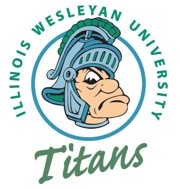Below is a summary of the abstract you submitted. Presenting author(s) is shown in bold.
If any changes need to be made, you can modify the abstract or change the authors.
You can also download a .docx version of this abstract.
If there are any problems, please email Dan at dar78@pitt.edu and he'll take care of them!
This abstract was last modified on May 5, 2017 at 4:22 p.m..

During the fall semester of 2016 at Illinois Wesleyan University, fifteen Mycobacterium smegmatis strain mc2155 (M. smeg) and nine Rhodobacter capsulatus strain YW1 (RC) bacteriophages were isolated. Although each of the five sequenced RC phages from the class was found to be in the same cluster through genome sequencing analysis, specific M. smeg phages, Squint and Tesla, were further analyzed because of their unique qualities recognized during the isolation and purification processes. Squint appeared to be unrelated to any other phage in the class as shown through lysogen formation and immunity testing, and Tesla presented small plaques after being discovered through the direct plating method. After these phages were sequenced at the University of Pittsburgh and annotated by the class, they were found to be members of two relatively rare clusters, J and S. Squint was found to be a member of the J cluster, which until then only had eleven members. Tesla was found to be an S cluster phage, a group comprised of only three phages. Once Squint and Tesla were sequenced and annotated, we could compare the evolutionary relationship existing between the genome of these bacteriophages and the other phages in the J and S clusters. The discovery and analysis of these J and S cluster bacteriophages is a step towards a greater understanding of phage diversity.


